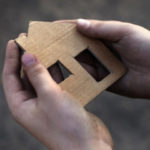
In a selling environment saturated with messages, trade-show exhibitors can stand out by acting more like successful retailers – who recognize that consumers are looking for more than something to buy.
As managing director of the North American office of Poximity ShopWork, the shopping division for global ad agency BBDO, Laura Davis-Taylor is one of the retail industry’s most influential marketing strategists.
And what she does for her retail clients is highly applicable to trade-show floors – which, as she sees it, face the same selling challenges as stores.
“I classify them both as ‘distracted environments,’” Davis-Taylor said. “Super busy, super cluttered. Lots going on. They can be very, very, very loud.” And they both face the same uphill battle: getting and keeping the attention of buyers in environments saturated with competing messages. Amid all the noise, Davis-Taylor said, “everybody wants uniqueness – something that makes you stand apart and helps you get beyond the sea of sameness.”
Her advice for companies and organizations when it comes to designing a trade-show booth? “I wouldn’t think of it as designing a trade-show booth at all,” she said. “I would think of it as designing an experience. Brands have to break through competition. And that’s not just visually. You can break through visually and get nowhere. You’ve got to break through visually and emotionally.”
Creating an experience for attendees – one that resonates emotionally – is key to being memorable. “Getting inside,” Davis-Taylor said, “that’s what’s going to matter. When you create the right experience, you create the right emotions. And you get people to buy in and open their minds and be part of something.”
Sensing the Sale
The idea that emotion is key to selling isn’t new, of course. Advertising that relies on subtle and not-so-subtle suggestions that buying certain products will make us happier, sexier, and more successful has surrounded us for decades, in increasing numbers. (The average resident of a city will encounter 3,000 to 4,000 advertising messages in a single day, according to Davis-Taylor.)
What is relatively new, however, are brain-imaging techniques like functional magnetic resonance imaging (fMRI), which measures patterns of electrical activity in the brain and maps their locations. The technology can pinpoint the regions of the brain that are activated by advertising messages, yielding information about whether specific marketing messages are triggering rational or emotional reactions, or combinations of both, and how effective they are at doing so.
These tools offer what amounts to the ability to interview our brains, brand expert Martin Lindstrom writes in his bestselling book Buyology: Truth and Lies About What We Buy. By accessing our brains in the “nanosecond lapse before thinking is translated into words,” brain-imaging techniques can tell us “the naked truth… unplugged and uncensored, about what causes us to buy,” writes Lindstrom, whose work has given him a seminal voice in neuromarketing, as the field of neuroscience-backed marketing is called.
In Buyology, Lindstrom relates the breakthrough results of a 2003 experiment that used brain imaging to analyze the reactions of research subjects participating in a version of the famous Pepsi Challenge, where Pepsi and Coca-Cola went head-to-head in blind taste tests. When test subjects tasted the soft drinks without knowing which was Coke and which was Pepsi, more than half said they preferred Pepsi, a response that was backed up by the measurement of activity in the part of the brain that is active when we find tastes appealing. But when test subjects knew which soft drinks they tasted beforehand, more than 75 percent said they preferred Coke. Brain activity also shifted, according to Lindstrom, showing that the test subjects’ brains were engaged in a “mute tug-of-war between rational and emotional thinking.”
Despite the rational preference for Pepsi, Coke won out because of all the positive associations the tasters had developed with Coca-Cola over the years – the “sheer, inarguable, inexorable, ineluctable, emotional Coke-ness of the brand,” Lindstrom writes. Because emotions are the way in which our brain encodes things of value, “a brand that engages us emotionally – think Apple, Harley-Davidson, and L’Oreal just for starters – will win every single time.”
Since 2004, Lindstrom has worked with researchers to conduct his own neuromarketing experiments, many of which have zeroed in on the role that our senses – vision, taste, touch, sound, and smell – play in creating human emotions. Because, if triggering emotions in consumers opens doors into buying behavior, activating the five senses is like getting a set of keys. “As human beings, we’re by far at our most receptive when we’re operating on all five tracks,” Lindstrom writes. “By appealing to our five senses, brands create strong memories in consumers. And this leads to stronger bonds between consumers and brands.”
Pioneering shopping-behavior researcher Paco Underhill, who has used scientific methods to analyze consumer behavior for more than 25 years, also identifies appealing to the senses as a growing trend. “I think one of the things that we are seeing in retail is the appreciation of use of all five senses,” he said. But it’s not without its challenges in a trade-show environment, where light and noise can be tough to control. “You can hand out Hershey’s Kisses,” Underhill said, “which is probably fun, but there probably should be a more creative way of dealing with all of those issues.”
That Certain Feeling
When it comes to assessing how widely trade shows are adopting strategies that strengthen the engagement of attendees, Melinda Kendall, vice president for business solutions at Freeman, recalls a favorite phrase: The future has already happened – but it’s not evenly distributed. “I wouldn’t say, as a whole, the event industry is behind,” Kendall said. “But we are not all in the same place.”
“A lot of things that consumer brands do don’t make sense for business-to-business,” said Kendall, who has worked as an executive in both commercial publishing and event management. “But an awful lot of them, if you think it through, can be adapted to a business-to-business environment. I don’t know if trade shows are learning from retailers, or retailers are learning from events, but they are all trying to be experiential marketers.”
One show floor where the strategies of sensory selling can be readily found – and sniffed and tasted – is at IMEX, the global exhibition for incentive travel, meetings, and events that has been held annually in Frankfurt for a decade. More than 150 countries are represented at the exhibition, where individual trade-show booths can cover nearly the area of a city block and rise two stories high. At this year’s show, held from May 22–24 at Messe Frankfurt, nearly every booth featured digital images, with photomontages and videos looping and flickering on plasma screens of every size.
Many hoteliers exhibiting at IMEX 2012 sought to recreate a version of the physical experience of being in a hotel lobby, with multilevel booths furnished with banks of plants, pillow-strewn sofas, low coffee tables, and chandeliers. DMOs and CVBs brought the flavors of their destinations to the show floor – sometimes literally, as at the Colombia booth, where a barista pulled one thousand fragrant shots of espresso on the show’s opening day. Attendees visiting the Texas booth were met by a life-sized plastic horse and cowhide-patterned stools.
At the Malaysia booth, sponsored by the Malaysia Convention & Exhibition Bureau, exhibitors hosted a cocktail reception that featured a version of a centuries-old spice market. Booth staff, dressed in traditional attire, spread cloths on the floor and swapped merchandise, including pepper and other spices, for paper currency distributed to visitors, in an elbow-to-elbow cacophony of color and sound. It was intentionally cramped, an exhibitor explained to an attendee, to make the market feel more authentic.
In retail, when people physically get their hands on something and become engaged in some way, there is a lot more conversion, Davis-Taylor said, with customers turned into buyers. Trade-show booth exhibitors, she said, can “do so much more than just hand out brochures, if you think about [exhibits] in terms of experience design.”
The Store of The Future
The National Retail Federation’s (NRF) Annual Convention & EXPO, known as Retail’s BIG Show and held every January at the Javits Center in New York City, is the epitome of the distracted environment that Davis-Taylor describes. As exhibitors vie to get noticed in the competitive field of retail marketing, “there are a billion banners in the air,” plus lights and entertainment, said Susan Newman, NRF’s senior vice president for conferences, who has worked for the organization since 2003.
This year, attendance at Retail’s BIG Show increased 10 percent over 2011, to 25,000, and NRF expects that the exhibition floor – 140,000 square feet in 2012 – will grow another 22,000 square feet in 2013. The 101-year-old show is expanding, Newman said, because the retail industry is changing so quickly. She said: “People need to come to our show to figure out the next innovation.”
A century ago, the show was “all about hangers and displays,” Newman said. Beginning in the 1980s, technology began to dominate the show, and now makes up 95 percent of exhibitor content. And as the industry has been transformed, so has Retail’s BIG Show. “The experience that we give our attendees, as well as what attendees experience at booths, has changed significantly over the last 10 years,” Newman said. “I think exhibitors are trying to be more experiential about how they show [products]. So, it really does add a lot more excitement on the expo floor.”
In years past, NRF built what it called “The Store of the Future” on its exhibition floor, where the next generation of technology was unveiled to dazzled attendees. But technology is now so ubiquitous, Newman said, that “most of the larger exhibitors are creating that ‘Store of the Future’ experience within their own spaces.”
Today, Retail’s BIG Show offers a Customer Experience and Mobile Pavilion, offering attendees demonstrations of multisensory environments. Davis-Taylor, who formerly was a vice president at the New York City–based experiential branding and marketing firm Creative Realities Inc., helped design one of the pavilions, working with Creative Realities’ then-president, Robin Reardon, a former Disney Imagineer. “We actually created a bunch of little ‘experience pads,’” DavisTaylor said. Large digital screens bring attendees toward a series of dome-like structures, where they can choose a path, depending on their interests. The domes are enclosed so that lighting, sound, and other environmental features – including scent – can be controlled. “People were crazy for it,” said Davis-Taylor, who noted that designing customer experiences has a lot in common with live theater production. “You have the lights, color, the conversations, the smells.”
‘Is This Experience For Me?’
Creating environments that use the senses to trigger emotion is basic to successful trade-show design, agrees Paolo Zeppa, senior vice president and general manager of Immersa Marketing, A Freeman Company, because emotion is “the first entry point. It’s where an individual decides: Is this experience for me, or not for me?”
Few mediums have the same potential to move people as face-to-face events and experiences – but when it comes to leveraging that potential, there are areas where trade shows lag behind retail. And by ignoring key ways in which retailers are creating new customer experiences, Zeppa said, tradeshow organizers may unwittingly engender negative emotions such as frustration and disappointment.
One example is retailing’s embrace of customization, which uses online and mobile digital tools to guide shoppers toward exactly the product they want, based on what they share with retailers about their preferences. Successful retailers, Zeppa said, take the position that “there are a million consumer brands – let me show you what is right for you.”
And retailers aren’t only customizing shopping experiences, they’re giving consumers ways to create their own custom products. Coca-Cola, for example, has introduced a vending machine that lets buyers create their own flavors. “It is not just about Coke and Coke Zero,” Newman said. “You create whatever flavor you want.” Likewise, consumers are now able to add their own designs on their running shoes, or have their names stitched on the backsides of their jeans. Newman said: “It’s all about being able to personalize a product.”
As consumers become accustomed to personalized shopping experiences, trade shows that don’t provide attendees with ways to easily identify and find the content that is personally relevant to them risk not connecting with them at all. A large trade show may trumpet the fact that it has hundreds of exhibitors as if it were an absolute benefit, Zeppa said, but for many attendees, “1,700 exhibitors is not a value proposition, it’s a carnival.”
Increasingly, attendees will expect some form of digital compass to help them cut through the clutter. Apple, Zeppa said, is a perfect example of how companies are redefining what is possible in the retail space. The technology giant has developed a mobile app for use in its stores that not only guides consumers to products, but also allows them to scan product price codes and charge their credit cards. Shoppers can purchase products without ever talking with a salesperson or standing in line at a cash register. That kind of shopping experience, Zeppa said, “will totally change how groups behave and what they expect.”
“You can talk all day long about experiences that drive emotions, but if you have a [trade-show attendee] who has just walked out of an Apple store, they are going to have an emotional reaction when a trade show doesn’t match up with what they just experienced,” Zeppa said. “I look at my 15-year-old nephew and try and picture him going to a traditional trade show. No way.”
Indeed, there aren’t many boundaries left when it comes to deploying digital experience in a physical environment, according Paul Price, CEO of Creative Realities, which has created digital installations in retail environments for clients such as National Geographic, Coca-Cola, and AT&T. “The technology is catching up with our imaginations – and in some cases has caught up,” Price said. Cost isn’t the barrier it once was, as the price of technology has come down while quality has improved. “I see enormous potential for digital,” Price said, “for lots of different reasons.”
Some applications are what Price terms “inspir-actional,” improving or creating customer experiences. For example, in Asia Coca-Cola recently distributed the Coca-Cola Hug Machine, a vending machine that, “if you hug the machine, it gives you a free Coke,” he said. But digital also has great potential to serve more utilitarian purposes at a trade show, Price said, such as providing way-finding, as well as interactive platforms that allow attendees to continually engage with various aspects of any show by way of mobile and digital displays inside the exhibit hall.
At Retail’s BIG Show, organizers a few years ago began to use “You Are Here” kiosks, similar to what might be found at a mall, at the entrances of exhibit halls. The kiosks feature interactive touch screens, making it possible for attendees to select a topic and see all the booths in that category highlighted, and also provide short booth descriptions, maps to specific booths, locations of educational sessions, and, of course, directions to restrooms. NRF’s kiosks are not “an unbelievable, state-of-the art kind of thing,” Newman said, “but attendees use them and love them. It makes their experience a lot easier in terms of being able to find their way to the building and the exhibitors they want.”
Online retailers that guide us to selections that match our interests – such as Amazon.com – have trained us to yearn for experiences tailored to our interests, said Davis-Taylor, who used a kiosk similar to NRF’s at GlobalShop, another large-scale annual retailer exhibition, held on Feb. 29–March 2 at the Sands Expo and Convention Center in Las Vegas.
We are spoiled now,” Davis-Taylor said. “I don’t want to have to go spend all day walking through a massive trade show. I want to know which [booths] I would be interested in and to have them really easy for me to find, so I can plan my day to have efficiencies and a happy experience. It’s very similar when we are trying to shop, and very similar when we are online.”
Don’t Change that Omnichannel
Perhaps the biggest problems with trade shows as sales environments, Zeppa said, is that too many of them are treated by their organizers as entities unto themselves, when instead “they should be part of an overarching relationship strategy with their target audience, before and after events, and across different mediums.” For retailers, the key term now is “omnichannel,” Newman said, which seeks to integrate interaction across multiple channels. “It is not just about mobile – although mobile is huge,” she said. “It is really about how everything from your online, in-store, and mobile experience comes together.”
But being social – and socially networked – is not just about brands blurting out messages. Rather, it’s about brands engaging with consumers. “Consumers today have less tolerance for the ‘everything is beautiful’ marketing spiel,” Zeppa said. “They are going to hear a message from a brand and then validate it with groups of individuals that they may not know, but they trust more the brand itself.”
Davis-Taylor agrees. “You are going to do better when you get people to share,” she said, because sharing is an innately human behavior – and thanks to mobile devices, people are more accustomed than ever to sharing information. “If I am at a show and can share [the things I like] with my compadres, why not?” Davis-Taylor said. “I mean, seriously. Talk about a good way to get booth traffic. Seems like such a no-brainer to me, but I think a lot of [exhibitors] don’t know how to do it, or the people who are in charge of the show aren’t giving them the platforms to do it.”
And isn’t talking, shopping-behavior expert Underhill asks, the whole point? When his consumer behavior research and consulting firm, Environsell Inc., exhibits at a trade show, it employs all of its own best advice about engaging attendees. “We recognize that the purpose of the booth,” Underhill said, “is often to have a 10-minute conversation.”
Six Lessons From Retail
Shopping malls may have been introduced as a way to bring stores together, according to a 2012 trend report by New York City–based experiential marketing company Creative Realities, but what put them on the map was their ability to bring people together. If you think that sounds a lot like a trade show, Creative Realities CEO Paul Price agrees. Many of the suggestions that the firm aims at retailers are equally applicable to trade-show organizers:
Work with your turf Buying online has advantages, but don’t forget that physical interactions ignite emotions. Grant attendees full access to your products and gain their brand allegiance.
Physical meets virtual Remember that attendees often dwell within multiple contexts at once. Fuse your online, mobile, and trade-show experience to create a symbiotic system – virtual should infiltrate physical, and vice versa.
People are talking Tap into the actual behaviors occurring on digital channels like Facebook. Complement your physical space with a digital presence that connects your brand evangelists with potential customers.
Someone to love Don’t forget the power of human touch – use your staff to choreograph the dance between digital and traditional. Your staff is your silver bullet – arm them with digital tools like tablets.
Draw them a map Bid farewell to static directories. Use digital to direct attendees to the products and services they want.
Ditch the still life Gorgeous graphic displays may attract eyes, but dynamic, digitally enhanced ones win hearts. Leverage new technologies to replace static displays with dynamic ones that tell evolving stories.
Trade-Show Anthropology
Trade-show exhibits, like stores, end up being “some form of mix of art and science,” said Paco Underhill, founder of the consumer behavioral research firm Environsell Inc., and author of the influential best-seller Why We Buy: The Science of Shopping.
But one of the “poignancies” of the history of trade shows, Underhill said, is that there has been so little science, in the form of research, done to measure how well they achieve their goals. “An enormous amount of money and energy gets put into producing them and constructing them,” Underhill said, “and very little energy or time or money is put into evaluating them.”
It’s a little ironic, because show booths are in a better-than-average position to put research into practice quickly. While the average, non-fashion store may only be redesigned every five to seven years, Underhill said, trade-show booths typically have a two-year lifespan.
The most common way that trade-show organizers and exhibitors do research is through simple surveys, asking people, “Did you visit this booth? Did you like it?” Underhill said. It’s better than nothing, but “the problem with surveys is people are often telling you what they think you want to hear.” A superior method, Underhill said, is to actually observe how attendees behave. Look at things like what percentage of people who approach the booth are greeted, and of those who are greeted or who interact with somebody, how long do they stay? Also watch whether attendees go through the exhibit the way you’ve anticipated. If you have some form of digital programming, how long are people actually looking at it?
Even better than observing these things yourself is to recruit people “to actually take you through your booth,” Underhill said. “It’s a really cool way of being able to see your tradeshow exhibit through somebody else’s eyes.”
You don’t necessarily have to hire a research firm to better understand how attendees will interact with your booth, says retail strategist Laura Davis-Taylor. Watch how people navigate trade shows, and “when you are out, watch people shop; watch people when they are in parks and interacting with each other,” Davis-Taylor said. “Once you are thinking about it, you’ll see patterns and you get little nuggets of insight.”
More Resources
Trade-show organizers can keep track of consumer trends at trendwatching.com.
Test Time
Here’s how to earn your CEU hour. Once you finish reading this CMP Series article, read the following material:
- “Sensory Branding: It Makes (Five) Senses,” by Martin Lindstrom.
To earn one hour of CEU credit, visit pcma.org/convene-cmp-
To earn additional credit, you can take more more tests in our series here: pcma.co/ConveneCEUs
The Certified Meeting Professional (CMP) is a registered trademark of the Convention Industry Council.



